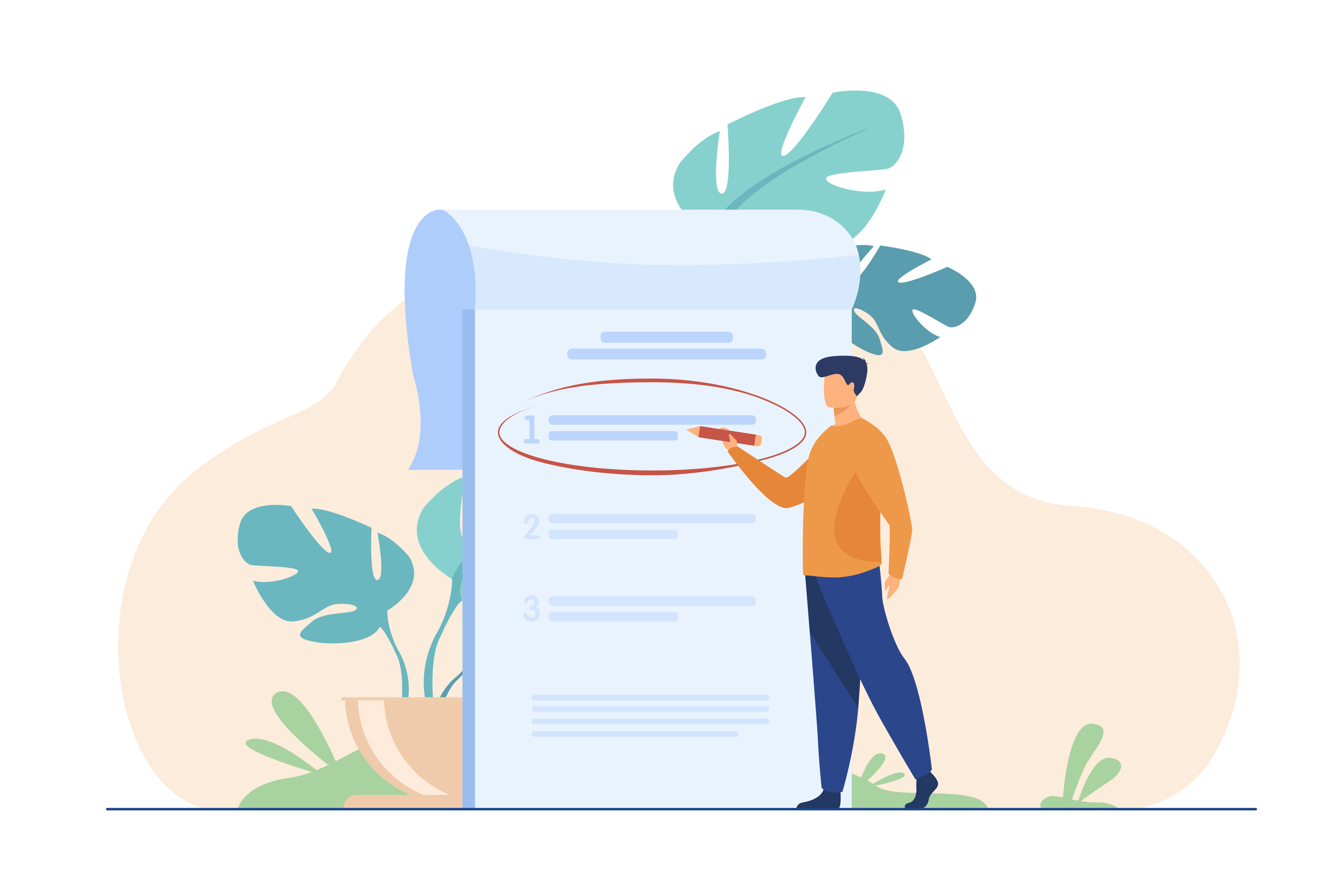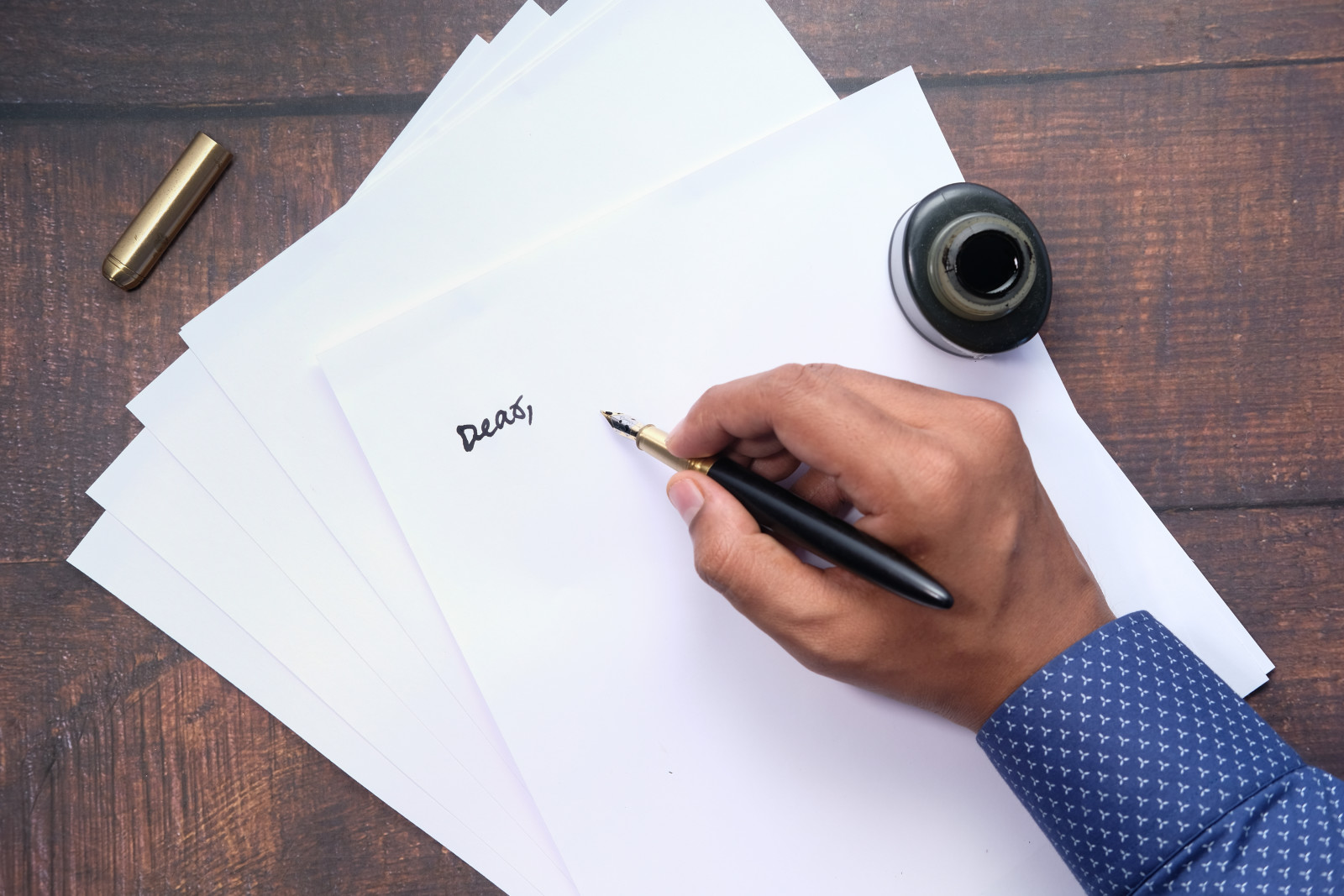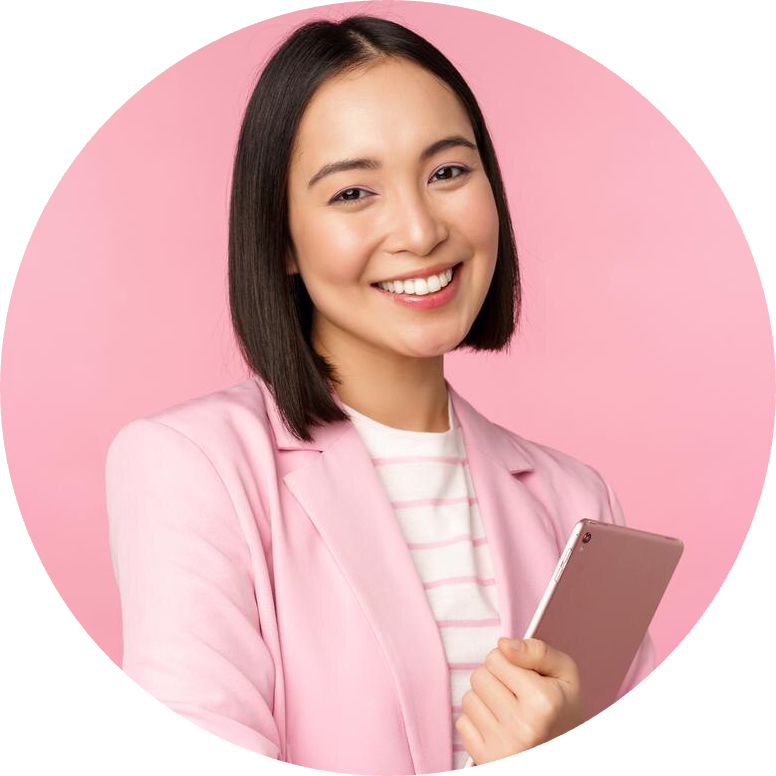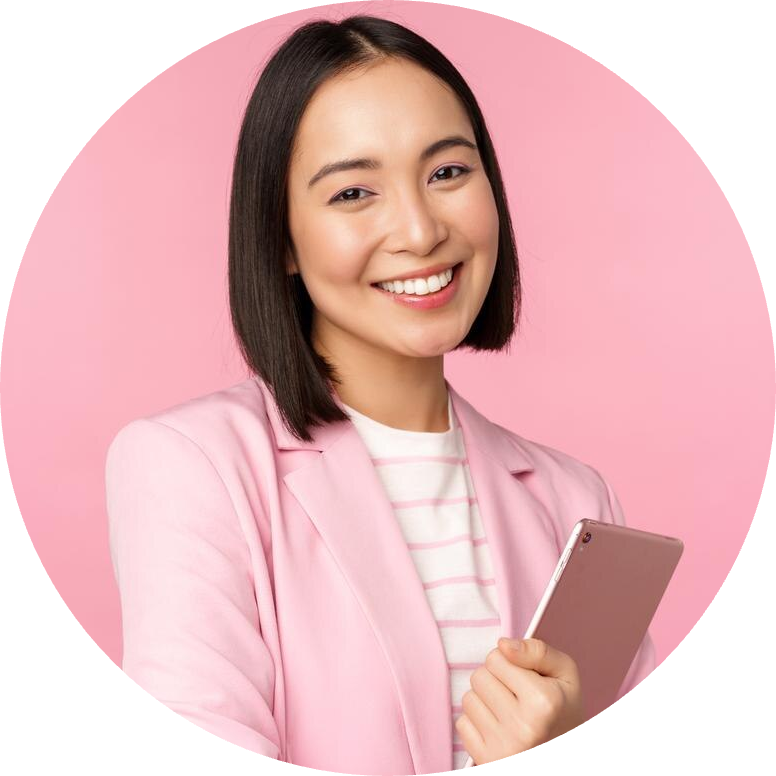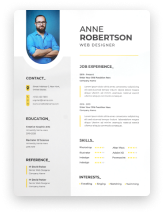Intro
In the dynamic and visually driven world of fashion design, your resume is not just a document---it's a testament to your creativity, style, and understanding of the industry. As a fashion designer, you need a resume that reflects your unique aesthetic, showcases your design accomplishments, and captures your professional journey in a compelling way. This guide is tailored to help fashion designers at any stage in their career create a resume that stands out in a highly competitive field. We'll cover everything from choosing the right format to highlighting your most impressive projects, ensuring that your resume not only impresses but also embodies the essence of your creative identity.

Fashion Designer Resume Example
Isabella Chen
456 Fashion Avenue, Style City, NY 10018
(555) 654-3210 | isabella.chen@example.com
Professional Summary
Innovative and artistic Fashion Designer with over 7 years of experience in designing high-end women's wear. Adept at conceptualizing unique designs, overseeing production, and staying ahead of fashion trends. Proven ability to combine artistic vision with practical application to create memorable fashion pieces. Eager to bring a fresh perspective and new designs to a prestigious fashion label.
Work Experience
Senior Fashion Designer
Vogue Couture, New York, NY
August 2016 - Present
- Led design team in creating seasonal collections for a luxury women's wear line.
- Collaborated with fabric suppliers and production teams to ensure quality and timely delivery.
- Conducted market research to stay ahead of trends and customer preferences.
- Organized and directed fashion shows and photoshoots to showcase collections.
Fashion Designer
Elegance by Elise, Los Angeles, CA
July 2013 - July 2016
- Designed and developed women's wear collections, focusing on dresses and formal wear.
- Worked with pattern makers and tailors to turn designs into high-quality garments.
- Participated in fashion trade shows, contributing to a significant increase in brand visibility.
- Managed custom orders for high-profile clients, ensuring satisfaction and repeat business.
Education
Bachelor of Fine Arts in Fashion Design
Fashion Institute of Technology, New York, NY
Graduated: May 2013
GPA: 3.8
Skills
- Creative Design & Conceptualization
- Trend Forecasting & Market Research
- Strong Sketching & Illustration Abilities
- Fabric Selection & Garment Construction
- Leadership & Team Collaboration
- Proficient in Adobe Illustrator and Photoshop
Portfolio
- Featured collections at isabellachen-designs.com
- Regular participant in New York Fashion Week
- Numerous designs published in fashion magazines like Vogue and Elle
Resume Format or Structure
Understanding the Right Format for Fashion Designers
The structure of your resume is crucial in the fashion industry. It's not just about listing your experiences and skills; it's about presenting them in a way that's as stylish and innovative as your designs. Here are the key formats you can consider:
-
Chronological Format: Ideal for designers with a solid and steady work history. It lists your work experience in reverse chronological order, focusing on your most recent positions.
-
Functional Format: Best for those with gaps in their employment or who are shifting from a different industry. It emphasizes skills and achievements rather than the chronological work history.
-
Combination Format: A blend of chronological and functional formats. It highlights your skills upfront, followed by your employment history. Great for experienced designers with a diverse skill set.
Layout and Design Elements
-
Aesthetics Matter: As a fashion designer, your resume should reflect your sense of style. Consider using subtle design elements that echo your personal brand without overwhelming the content.
-
Readability: Use a clean, legible font. Organize information in a way that's easy to scan.
-
Contact Information: Place it prominently at the top. Include your name, phone number, email, and a link to your online portfolio.
-
Length: Aim for one page, especially if you have less than 10 years of experience. For senior designers, two pages can be acceptable to cover extensive work.
Customization for the Job
-
Tailor your resume for each job application. Highlight experiences and skills that are most relevant to the position.
-
Use keywords from the job description. Many companies use Applicant Tracking Systems (ATS), and this will help your resume get picked up.
Resume Summary or Objective
Crafting a Compelling Summary or Objective
As a fashion designer, your resume summary or objective is your opening statement, setting the tone for the rest of your resume. It should be a reflection of your professional identity and a teaser of what you bring to the table.
Resume Summary for Experienced Designers
The summary is ideal for experienced fashion designers. It should succinctly highlight your years of experience, key skills, and major accomplishments. For instance:
Experienced Fashion Designer with over 8 years in high-end womenswear. Proven track record in innovative design, pattern making, and leading successful collaborations. Known for a distinct style that blends modern aesthetics with traditional craftsmanship. Successfully launched 3 award-winning seasonal collections that increased brand visibility and sales.
Resume Objective for New Designers or Career Changers
If you're just starting out or changing careers, a resume objective is more suitable. It should focus on your passion for fashion design, relevant skills you've acquired, and how you plan to contribute to the company.
Aspiring Fashion Designer recently graduated from the London College of Fashion, specializing in sustainable design. Passionate about blending contemporary fashion with eco-friendly practices. Seeking to leverage acquired academic knowledge and internship experience at a forward-thinking fashion house to innovate and drive sustainable fashion trends.
Personalizing Your Statement
-
Make sure your summary or objective aligns with the specific job and company you're applying to.
-
Use powerful adjectives and industry-specific terms to make your statement stand out.
-
Keep it concise and impactful, ideally no more than 3-4 sentences.
Work Experience
Showcasing Your Professional Journey
The Work Experience section is where you get to shine a spotlight on your professional achievements. As a fashion designer, it's not just about listing jobs; it's about narrating your creative journey.
How to List Your Experience
-
Start with the Most Recent Job: Use reverse chronological order. Include the job title, company name, location, and dates of employment.
-
Use Action Verbs: Begin bullet points with dynamic verbs like designed, collaborated, innovated, or spearheaded.
-
Quantify Achievements: Where possible, add numbers to quantify your achievements - like percentages of sales increases, the number of collections designed, or team sizes you've managed.
-
Highlight Relevant Projects: Especially if you've worked on notable collections or with renowned brands.
For Senior Designers
If you have a wealth of experience, focus on your most recent and relevant roles. It's okay to omit early career jobs that don't add value to your current career trajectory.
For New Designers or Career Changers
-
Emphasize any internships, freelance work, or collaborative projects.
-
Include any relevant non-fashion work experience that demonstrates transferable skills like creativity, teamwork, or project management.
Describing Your Roles
-
Be Specific: Describe the types of designs you created, the materials you worked with, or the style of fashion you specialized in.
-
Showcase Your Creative Process: Briefly mention how you approach design projects or collaborate with teams.
-
Mention Recognition: If your work has been featured in publications, fashion shows, or exhibitions, mention it.
Fashion Designe
Z Couture, New York, NY | Jan 2019 - Present
-
Led the design of 4 high-end womenswear collections, resulting in a 25% sales increase year over year.
-
Collaborated with fabric suppliers to source sustainable materials, reducing environmental impact by 30%.
-
Featured in Vogue and Harper's Bazaar for innovative design in sustainable fashion.
Education
Highlighting Your Academic Background
In the fashion industry, where your educational background can be as important as your experience, it's crucial to detail your academic achievements effectively.
Listing Your Education
-
University Degrees: Start with your highest degree. Include the degree name, university name, and graduation year. For recent graduates, you can add major projects or relevant coursework.
-
Fashion Design Schools: If you attended a specialized fashion design school, this could be a major highlight. Include any specializations or notable achievements during your time there.
-
Continuing Education and Online Courses: If you've taken any additional courses relevant to fashion design, include them. This shows your commitment to continuous learning.
For Experienced Designers
If you have several years of industry experience, keep the education section brief. Focus more on your professional accomplishments.
For New Designers or Recent Graduates
-
Emphasize your educational achievements, especially if you lack extensive professional experience.
-
Include GPA if it's impressive (typically 3.5 or higher).
-
Mention any awards, honors, or recognitions you received during your academic career.
Education Section Examples
Master of Fine Arts in Fashion Design
Parsons School of Design
New York, NY | 2015
- Specialization in Sustainable Fashion Design
Bachelor of Arts in Fashion Design
London College of Fashion
London, UK | 2023
- Graduated with Honors, GPA: 3.8
- Thesis Project: "Urban Renewal" A sustainable urban wear collection featured in the 2023 Student Showcase
Skills
Showcasing Your Design Expertise
In the fashion industry, your skill set is a critical component of your resume. It's essential to highlight both your technical and soft skills to show employers the full range of your capabilities.
Technical Skills
These are the hard skills specific to fashion design. They can include:
-
Design Software Proficiency: Skills in Adobe Illustrator, Photoshop, and CAD software for fashion design.
-
Pattern Making and Sewing: Understanding of pattern drafting, draping, and sewing techniques.
-
Material Knowledge: Familiarity with different fabrics, their properties, and uses.
-
Fashion Illustration: Ability to sketch and present design ideas effectively.
Soft Skills
Soft skills are equally important in the fashion world. They include:
-
Creativity and Vision: Your ability to come up with innovative and original designs.
-
Attention to Detail: Precision in design and execution.
-
Communication Skills: Both verbal and written communication skills, crucial for collaborating with teams and presenting ideas.
-
Time Management: Ability to handle multiple projects and meet deadlines.
Customizing Skills for the Job Description
Tailor your skills section to match the requirements listed in the job description. This not only shows that you're a good fit but also helps your resume pass through Applicant Tracking Systems (ATS).
Skills Section Example
-
Proficient in Adobe Illustrator and Photoshop for fashion design.
-
Experienced in pattern making, draping, and textile selection.
-
Strong sense of color, texture, and pattern in high-fashion contexts.
-
Excellent communication skills for effective team collaboration and client presentations.
Additional Sections
Enhancing Your Resume with Unique Elements
To stand out in the competitive field of fashion design, consider including additional sections that showcase your unique strengths and experiences.
Certifications and Awards
-
Certifications: Include any relevant certifications that add value to your role as a fashion designer. For example, certifications in sustainable fashion design, advanced pattern making, or textile science.
-
Awards: Highlight any awards or recognitions you have received, whether in fashion shows, design competitions, or industry accolades.
Portfolio Link
- Your portfolio is crucial in fashion design. Make sure to include a link to your online portfolio. It should be easily accessible and showcase a range of your best work.
Volunteer Experience or Internships
- Especially for those new to the field, include any internships or volunteer work related to fashion. This can demonstrate your passion and commitment to the industry.
Languages
- If you're fluent in multiple languages, include them. The fashion industry is global, and additional languages can be a significant asset.
Personal Projects or Collaborations
- Mention any personal projects or collaborations that showcase your creativity, initiative, and ability to work in a team.
Additional Section Examples
Certifications:
-
Certified Sustainable Fashion Designer, Eco Fashion World, 2022
-
Advanced Pattern Making, Fashion Institute of Technology, 2021
Portfolio:
Languages:
-
Fluent in English and Italian
-
Basic proficiency in French
Volunteer Experience:
- Volunteer Designer, Fashion for All Foundation, 2020-2021
Cover Letter
Crafting an Impactful Cover Letter
A cover letter is your opportunity to tell a story that your resume can't. It's where you can express your passion for fashion design, discuss your design philosophy, and show how you would be a great fit for the company.
Structure of the Cover Letter
-
Introduction: Start with a strong opening that grabs attention. Mention the position you're applying for and where you found the job listing.
-
Body: This is where you delve into your experiences and skills. Highlight key accomplishments from your resume, but also include anecdotes or experiences that showcase your creativity, work ethic, and passion for fashion design.
-
Closing: End with a call to action, such as expressing your eagerness to discuss your qualifications in an interview.
Personalizing Your Cover Letter
-
Tailor each cover letter to the job and company. Show that you've done your research and understand what they're looking for.
-
Use a tone that matches the company's brand. If it's a formal and traditional brand, keep it professional. If it's a young and edgy brand, you can be more creative and informal.
Cover Letter Example
Dear [Hiring Manager's Name],
I am writing to express my interest in the Fashion Designer position at [Company Name], as advertised on [Where You Found the Job]. With my extensive experience in high-end womenswear and a deep commitment to sustainable fashion, I am excited about the opportunity to contribute to [Company's Project or Collection Name] that I admire greatly.
Further Sections and Final Thoughts
Maximizing Your Resume's Impact
After covering the essentials, it's important to give your resume that final polish to ensure it stands out in a stack of applications.
Tailoring and Fine-Tuning
-
Review your resume and cover letter for each application. Make sure they are perfectly tailored to the job and company.
-
Check for any errors or inconsistencies. A flawless presentation is crucial in the detail-oriented world of fashion.
The Power of Networking
-
Don't underestimate the power of industry connections. Attend fashion events, engage in online fashion communities, and keep in touch with your professional network.
-
Sometimes, who you know can be as important as what you know in landing your dream job.
Staying Informed and Evolving
-
Keep up with the latest trends in fashion design, and continuously evolve your skills and portfolio.
-
The fashion industry is ever-changing. Staying informed and adaptable is key to a long and successful career.
Final Thoughts
Your resume and cover letter are just the starting points of your job application journey. They open the door, but it's your portfolio, your personality, and your professional relationships that will ultimately help you secure and succeed in a fashion design role.
Key Takeaway
Summarizing Your Path to a Winning Fashion Designer Resume
Crafting a resume as a fashion designer is about blending your professional experiences with your creative identity. Here are the key takeaways from this guide:
-
Resume Format: Choose a format (chronological, functional, or combination) that best showcases your experience and skills.
-
Compelling Summary/Objective: Start with a strong opening that highlights your unique strengths and career aspirations.
-
Detailed Work Experience: Use this section to narrate your creative journey, emphasizing achievements with quantifiable results.
-
Education: Highlight your academic credentials, especially if they're from notable fashion institutes.
-
Skills: Balance technical skills with soft skills to show a well-rounded professional profile.
-
Additional Sections: Use these to showcase certifications, awards, languages, or volunteer work that add depth to your profile.
-
Cover Letter: This is your chance to tell your story and connect with the employer on a more personal level.
-
Final Touches: Tailor, proofread, and ensure your application is error-free and polished.
Remember, your resume and cover letter are the first impressions you make on a potential employer. They should not only reflect your qualifications but also your passion for fashion design and your personal brand.
Recommended Reading



